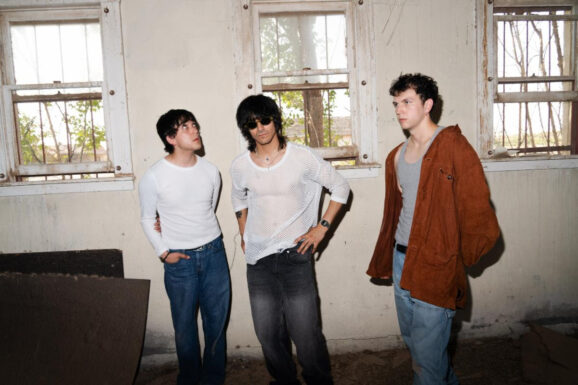[rating=8.00]
The filmmaking prowess that went into First Man, director Damien Chazelle’s follow up to 2016’s La La Land, makes itself known from the opening seconds. Here we see Neil Armstrong (Ryan Gosling) in a high speed test flight, the sound hits us like thunder as Chazelle takes up, up, and away, beyond the wild blue yonder, as Armstrong gets his first taste of the black void of the beyond.
It’s a gripping opener, which tells us all we need to know about Armstrong and opens up the narrative the follows. It’s a narrative we all know, of course, or are at least familiar with. Armstrong gets to be the first man to walk on the surface of the moon, that conclusion is foregone and it is, ostensibly, the reason we’re all here.
Chazelle’s focus, however, is not necessarily on that “giant leap for mankind.” No, he chooses instead to focus on the “one small step for [a] man.” As much as we want this story to be about humanity’s achievements or America’s achievements it is, instead, about Armstrong’s achievements, contextualizing what drives him and what propelled him high from the surface of the earth to the surface of the moon.
We begin our journey with Armstrong following the death of his young daughter, Karen, to brain cancer in 1962. It’s after this that he and his wife, Janet (Claire Foy) make the journey from California to Houston to help with Gemini program, which eventually led to his work on the Apollo missions and, naturally, his walk on the moon.
Screenwriter Josh Singer (Spotlight, The Post) works from the book of the same name by James R. Hansen and meticulously details the personal struggles faced by Armstrong as his life and career careened him towards human greatness. Stoic and professional, Armstrong suffered numerous emotional setbacks throughout his life, not the least of which was deadly fire onboard Apollo 1, which saw Armstrong lose three close friends and colleagues.
Gosling plays well with Armstrong’s noted stoicism and grace, even as First Man delves into the personal details of his marriage to Janet. We don’t often think about the personal tolls taken on the lives of our greatest heroes, but the dedication Armstrong gave to his missions certainly wasn’t without struggle. He and Foy are each remarkable in their portrayals, cultivating the emotion latent in the story and bringing it to life beautifully.
The elephant in the room surrounding the film is the manufactured outrage regarding the film’s lack of the flag planting on the moon. Detractors state that this is some sort of revisionist effort, meant to lessen to efforts of America but, like most pre-release outrage, it’s baseless. True, the flag planting isn’t seen, but the flag on the moon itself is. This moment is neglected in favor of something for more powerful and more fitting with the film’s “small step for [a] man” theme. Aside from that, the stars and stripes appear throughout the film at a near constant clip. There could be no mistaking this as anything but an American effort.
Chazelle has, once again, proven himself adept at technical mastery, and First Man is a wonderful piece of filmmaking. It is one of the better movies made about space exploration, and one that doesn’t neglect the humanity of man’s missions to space. Here, Armstrong’s struggles and successes become our own, acting as a pitch perfect symbol of humanity’s achievements and a strong reminder of our drive to succeed against all odds.
First Man is now playing in theaters everywhere.











